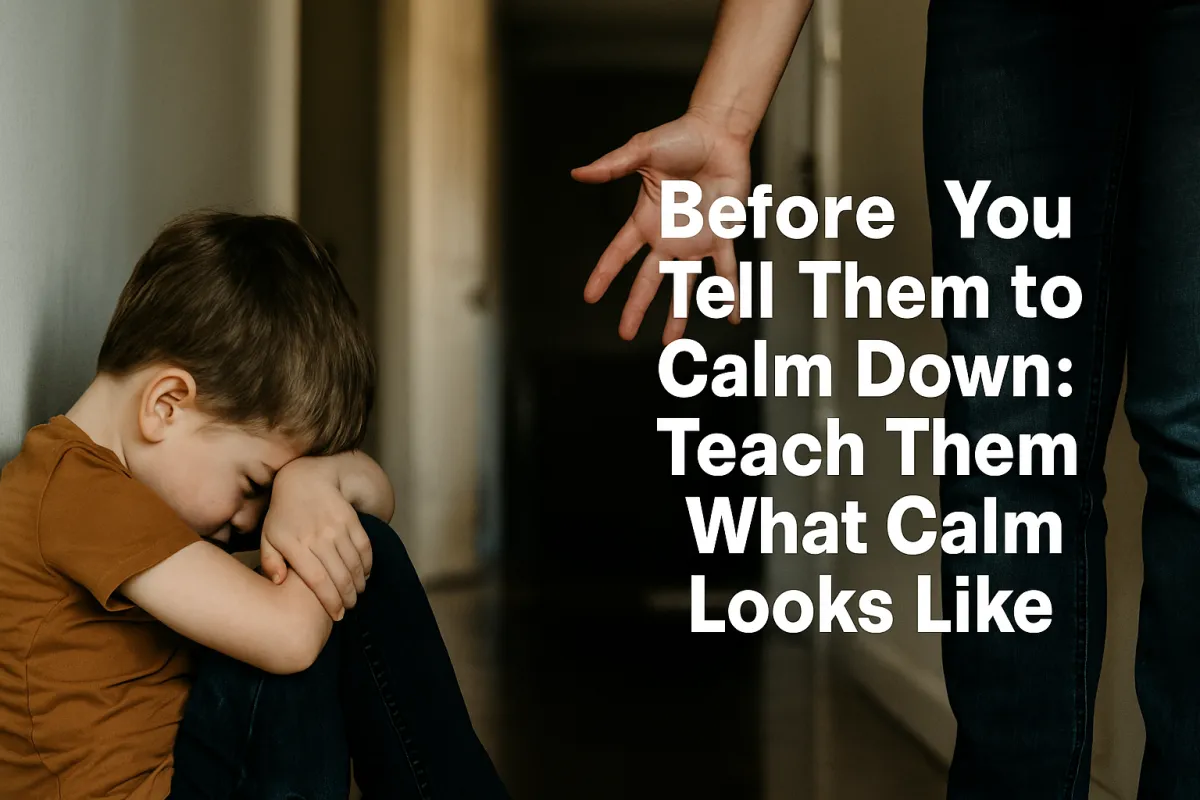
The Mirror Effect
Before You Tell Them to Calm Down: Teach Them What Calm Looks Like
By Krista Fee KIDSAFE Building Blocks™
Let’s be honest—"calm down" is often a demand made by dysregulated adults to even more dysregulated kids.
We say it because we’re overwhelmed. Because we want control. Because we want peace.
But were missing something crucial.
Children can’t regulate what they’ve never seen modeled.
And in homes or classrooms where chaos, silence, punishment, or fear have been the primary response to emotion, there’s no template for calm—only compliance or collapse.
🧠 The Developing Brain: A Crash Course
Children’s brains are beautifully under construction. Their amygdala—the part of the brain responsible for fear and threat detection—is fully online. But the prefrontal cortex—the part that regulates impulse, emotion, and logic? That part’s still building scaffolding until their mid-20s.
When kids experience stress, their body goes into fight, flight, freeze, or fawn.
What looks like “bad behavior” is often a nervous system doing exactly what it’s supposed to do when it feels unsafe.
Fight: yelling, throwing, hitting
Flight: running away, hiding
Freeze: silence, shutdown
Fawn: over-compliance, caretaking, dissociation
If we respond with shame, punishment, or rejection, we don’t teach regulation—we teach suppression. We teach them that their emotions are dangerous. We teach them that safety = performing calm instead of embodying it.
👀 Children Learn Emotion Through Observation, Not Explanation
You can’t lecture a child into nervous system regulation.
You can’t ask a flooded brain to do what the brain isn’t capable of when it’s flooded.
Children learn to regulate by borrowing the nervous system of a safe adult. This is called co-regulation—and it’s the foundation of emotional safety.
When a child sees you take a breath before responding…
When they hear you name your own emotions calmly…
When they see you cry and recover, get mad and repair…
They learn: “Big feelings are okay. And I can move through them safely.”
🛑 But What If I’m Dysregulated Too?
Good. That means you’re human.
Here’s what most parents and educators were never told:
You don’t need perfect regulation. You need authentic repair.
You can say:
“That overwhelmed me. I need a breath.”
“I didn’t like how I handled that. I’m sorry. Let’s try again.”
“My body got loud because I didn’t feel in control. That wasn’t your fault.”
These moments? They’re gold. They teach children that we all mess up—but love, repair, and self-awareness help us come back together.
🛠 5 Real-World Tools for Teaching Calm
Here are five grounded, trauma-informed ways to teach kids what calm actually looks like:
1. Be the Anchor, Not the Storm
Before you address the child’s behavior, regulate your own.
Put your hand on your heart. Lower your voice. Let your breath lead the room.
🔁 Script: “Let’s both take a breath before we talk.”
2. Name the Feeling Without Shaming It
Use emotion language to name what you see, not what they are.
🔁 Script: “It looks like your body is having a really mad moment. I wonder if it’s trying to tell us something.”
3. Create a Regulate-Rest-Repair Rhythm
Regulate first (breathe or move), rest second (sit, hydrate, pause), repair third (talk about it when calm).
🔁 Tip: Use visual cards, weighted objects, or music for transitions.
4. Use Nonverbal Expression as an Outlet
Art, movement, drumming, safe stomping, tearing paper—these allow energy to move through the body in ways that words can’t yet do.
🔁 Script: “Want to draw what your mad looks like?”
5. Celebrate the Reconnection, Not Just the Behavior
Don’t just praise when the storm passes—acknowledge the child’s capacity to return to safety.
🔁 Script: “You did something really powerful—you helped your body calm down. That’s strength.”
🌱 You’re Teaching More Than You Know
Every time you show up regulated—or take responsibility when you don’t—you’re laying the foundation for emotional literacy, safe attachment, and lifelong resilience.
You’re not just raising behavior. You’re raising a human.
And in a world that demands quiet kids and compliant classrooms, what we really need are regulated adults and safe relational space.
Start with presence. Layer in permission. Anchor with compassion.
That’s how kids learn to calm down—by seeing what calm looks and feels like in you.
🔗 JOIN THE KIDSAFE™ Building Blocks Community
Courses, tools, and trauma-informed training for parents, teachers, and professionals.
🧠 Learn how to model safety and regulation in real-world situations.
👥 Connect with others doing the work.
✨ Join the wait list now → RISEUP CONNECT
🏷 #RISEUPVoices #KIDSAFE #CoRegulation #ChildDevelopment #EmotionalSafety #TraumaInformedParenting #RiseWithLove
